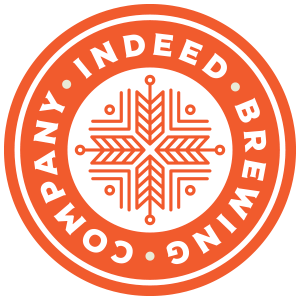The Blog
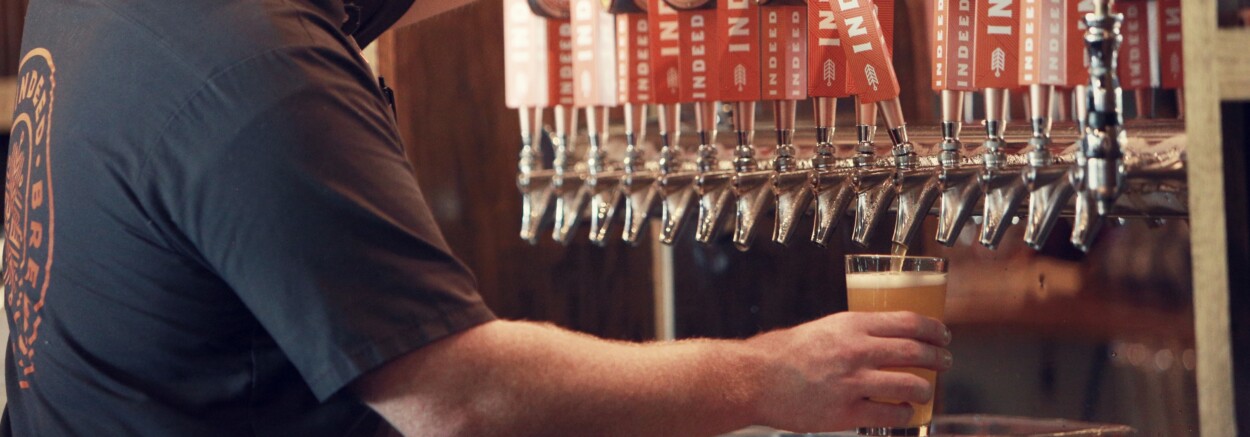
Sep 3/15

Introducing our newest 12-packs!
Even if you're not heading back to school this week with fresh kicks and a backpack full of books, we're here with a little math problem to work through.
It's a softball, sure, but we think you'll like it. What do you get when you take a 6-pack of Indeed beer, double it, and pack it all in a handy, portable, shareable container? That's right, 12-packs. A+
12-packs are now available for two of our year-round beers: Day Tripper, our signature hoppy Pale Ale, and Dandy Lager, a crisp, clean Pale Lager. Clear some room in your fridge (you weren't going to eat that kale, let's be honest), and stock up on two of your favorite Indeed beers, now available by the dozen.
For bonus points on this impromptu quiz, when you pick up a 12-pack of Day Tripper you'll get a sneak preview of what our newly redesigned flagship cans will look like, once we work through our existing stock.
Look for 12-packs of Dandy Lager and Day Tripper to hit liquor store shelves this week!
Aug 13/15
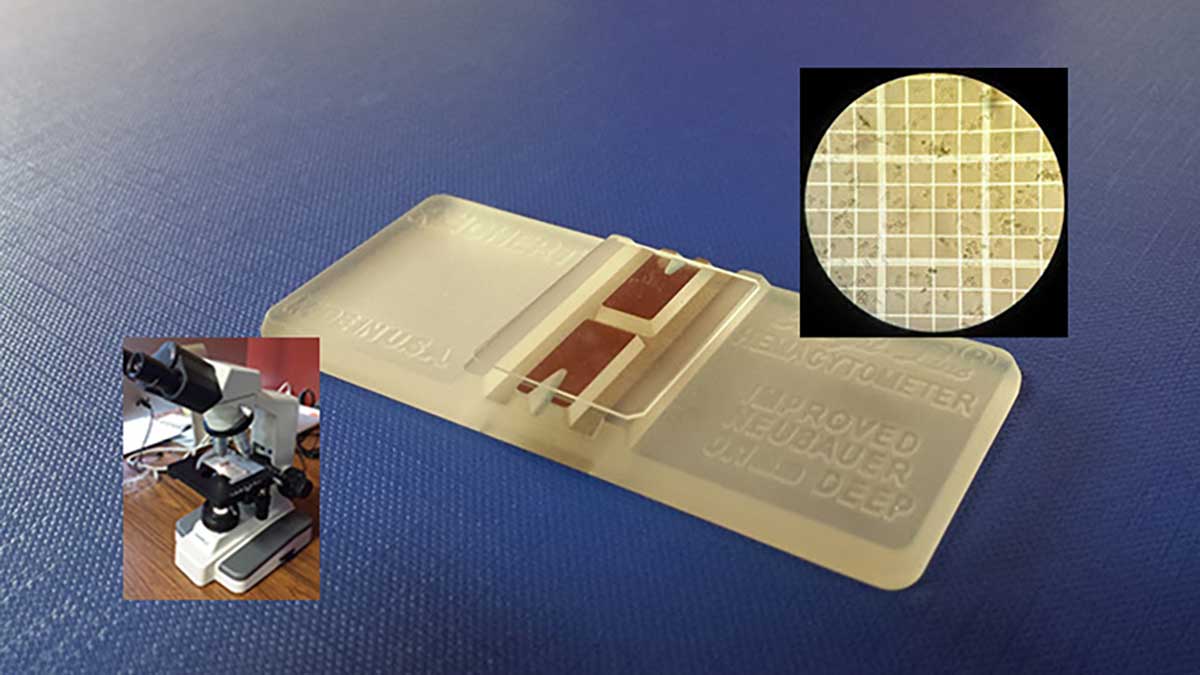
Quality Manager Daniel Howell expands on the magical powers of yeast
The next time you take a sip of that beautiful beer in your hand, don't take it for granted! Stop and thank the hard-working yeast responsible for the magic in that glass. Behind all those bubbles and booze are trillions of yeast cells carefully cultivated and coddled by our brewers to turn wort into beer. It's not rocket science, technically, but there's actually a lot of science involved, so we asked our Quality Manager Daniel Howell to drop some knowledge on us about yeast.
What is yeast?
Technically speaking, yeast are unicellular fungi. When talking about brewers yeast, there are two important species: Saccharomyces cerevisiae (ale yeast) and Saccharomyces pastorianus (lager yeast) with each species having countless strains. While there is a lot of variation among different strains, the vast majority of the beer in the world is made by 2 of these two species.
What is the difference between ale and lager yeast? Ale yeast are typically used at warmer fermentation temperatures (65-70°F+) and lager yeast are typically used at cooler fermentation temperatures (45-55°F). The differences in the fermentation temperature helps drive the differences in the resulting beers. Ales tend to ferment a little quicker and produce more fruity characters (think apple, pear, berry, and banana). Lagers tend to ferment slower and are sometimes described to be "smoother" or "crisp" (which is a combination of fewer fruity and more sulfur compounds).
What does yeast do for us? For the beer?
Well, the real question should be "what do we do for the yeast?" In the brewhouse, almost all the steps in brewing are performed with one thing in mind: keep the yeast happy. In return for making them happy, the yeast transform the wort (sugar, bitter malty water) into a tasty, fizzy, alcoholic beverage.
So, what makes the yeast happy? How do you know they are happy?
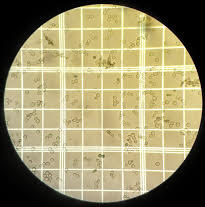
In general, yeast want two things: to eat and to reproduce. Yeast's food of choice is sugar, which we oblige by providing them with malt-derived carbohydrates in the wort. To reproduce (which is referred to as budding), the yeast need energy (from the sugar) and oxygen to help build new cellular material. To determine if the yeast are happy, we can take a small sample of the yeast and look at them under the microscope. In the picture here, you can see a few cells that are darker blue in color. These cells are what we refer to as "non-vaible." When we are using yeast to make beer, we want as few non-viable cells as possible.
How much yeast does it take to make beer?
A lot. For example, in Day Tripper, we aim to start fermentation with 9 million yeast cells per milliliter of beer. That means in our standard 60 barrel (1,860 gallon) fermenter we use 63 trillion yeast cells. This number depends on the beer and is typically double in lagers (you need more yeast for the cold fermentation). To count the amount of yeast in a given sample, we use a special device called a hemocytometer which allows us to place a precise amount of liquid in a grid and look at it under the microscope. By counting the amount of yeast in the grid, we can determine the number of yeast per milliliter of sample.
Where do you get all that yeast?
We purchase our house ale and lager yeast from a supply company (Wyeast Laboratories). Luckily, in the process of making beer, the yeast also reproducing making more yeast. In most beers, the amount of yeast will increase 3 to 5 fold. So, that means from 1 batch of Day Tripper, for example, we will have enough yeast for 3-5 subsequent beers.
How do you get the yeast from one beer to the next?
At Indeed we use fermenters that have a cone-shaped bottom. When the yeast is done fermenting, it clumps together (flocculates) and settles out. The sloped sides of the tank concentrate the yeast to the bottom. When we are ready to use the yeast, a brewer connects a special modified keg to the bottom of the tank and collects a certain amount of yeast. By taking a sample of the yeast and counting it in the lab, we know exactly how many pounds of yeast need to be added to the next batch.
How many times do you re-use the yeast? And what do you do with it when you are done?
We re-use our yeast in about 10 fermentations before we bring in a new supply. Overuse can result in changes in the flavor profile of the beer and may result in poor or slow fermentation. Most of our yeast is removed using our centrifuge separator.
So what have we learned today? If the fungi are happy, everybody's happy. Thanks for the lesson on the power of yeast, Daniel!
Jun 24/15
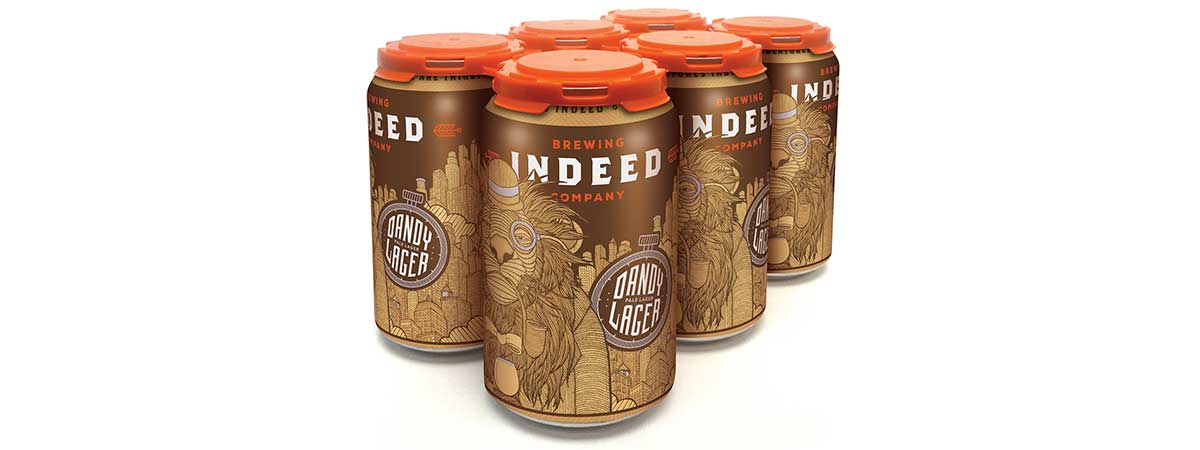
It's Dandy Hour somewhere!
It's almost #DandyHour! We're celebrating the release of our third flagship beer Dandy Lager in cans with a tasting blitz the likes of which you've never seen.
Wherever you are in the Twin Cities on Friday July 10th, join us for #DandyHour! It's your chance to get one of the first sips of Dandy Lager straight from the fresh new can.
Someone from Indeed will be sampling at all of these fine liquor stores, all at the same time:
Cheers Wine & Spirits (Bloomington location)
Eden Prairie Liquor (Near Cub Foods)
Edina Liquor (Southdale Location)
Haskell's Excelsior
Lowertown Wine & Spirits
Lunds & Byerlys Downtown Minneapolis
Total Wine & More - Woodbury
Northgate Liquors (5-7pm)
Get social! Meet us at the tasting blitz and tag your photos and tweets with the hashtag #DandyHour. It's #DandyHour somewhere!
Jun 9/15
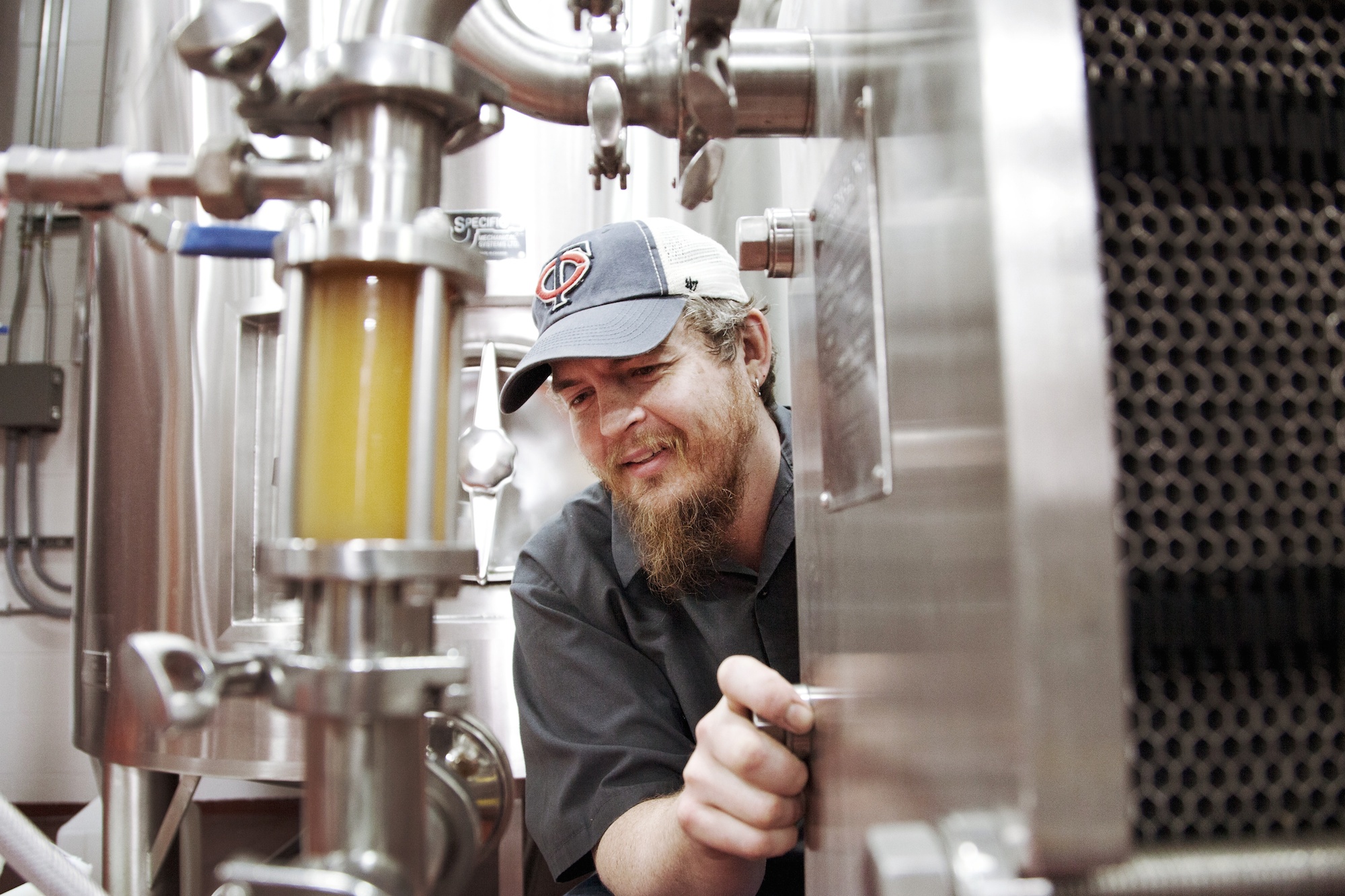
Shenanigans infusions are taking flight in the taproom!
Summer is time for Shenanigans! If you’ve been following along here on the blog, you know all about our newly released Derailed Series kettle-soured Mojito Shenanigans. But did you know that this version is just the latest iteration in a long line of fun, creative, and damn tasty Shenanigans infusions?
This Thursday afternoon in the taproom we’re turning happy hour into Shenanigans Infusion Flight Night from 3-6pm to showcase a few of our current favorites. This one-night-only flight includes Shenanigans Summer Ale, Lemongrass, Bitter Orange Peel cask, and kettle-soured Mojito Shenanigans for $12!
Head Brewer Josh Bischoff digs a little deeper for us into how the infusion process works: “We have kegs to which we added a 5" port on the side, so we can easily add ingredients and then fill the keg with whatever beer we are using. From there, the process depends on the ingredient we are using. For teas we brew a concentrated tea and then add that directly to the infusion keg. For fruits, we either use whole fruits, purees, or concentrates. Those get added to the infusion kegs as well, then aged with the beer for usually a week or so, then the beer gets transferred back to a non-infusion keg and served.”
Shenanigans Summer Ale is particularly receptive to flavor infusions and knows how to show them off. Josh explains, “Shenanigans is a good base because it's light another that we can add pretty much whatever we want and not have the infusion flavors fighting with overpowering flavors from the beer. That said, Shenanigans also has a nice malt and citrusy flavor profile to contribute to the infusion, so it still has a presence.”
There are no hard and fast rules when it comes to our Shenanigans infusions and flavor combinations, but Josh says, “ Infusion ideas come from the brewers talking about what flavors we think would be interesting and would work in the beer we are going to infuse. A lot of our infusions come from things I enjoy when I’m not drinking beer, things like Mojitos, tea, and Arnie Palmers.”
You keep dreaming them up, we’ll happily keep drinking them down.
Shenanigans Infusion Flight Night
Thursday June 11th, 3-6pm
RSVP
Jun 4/15
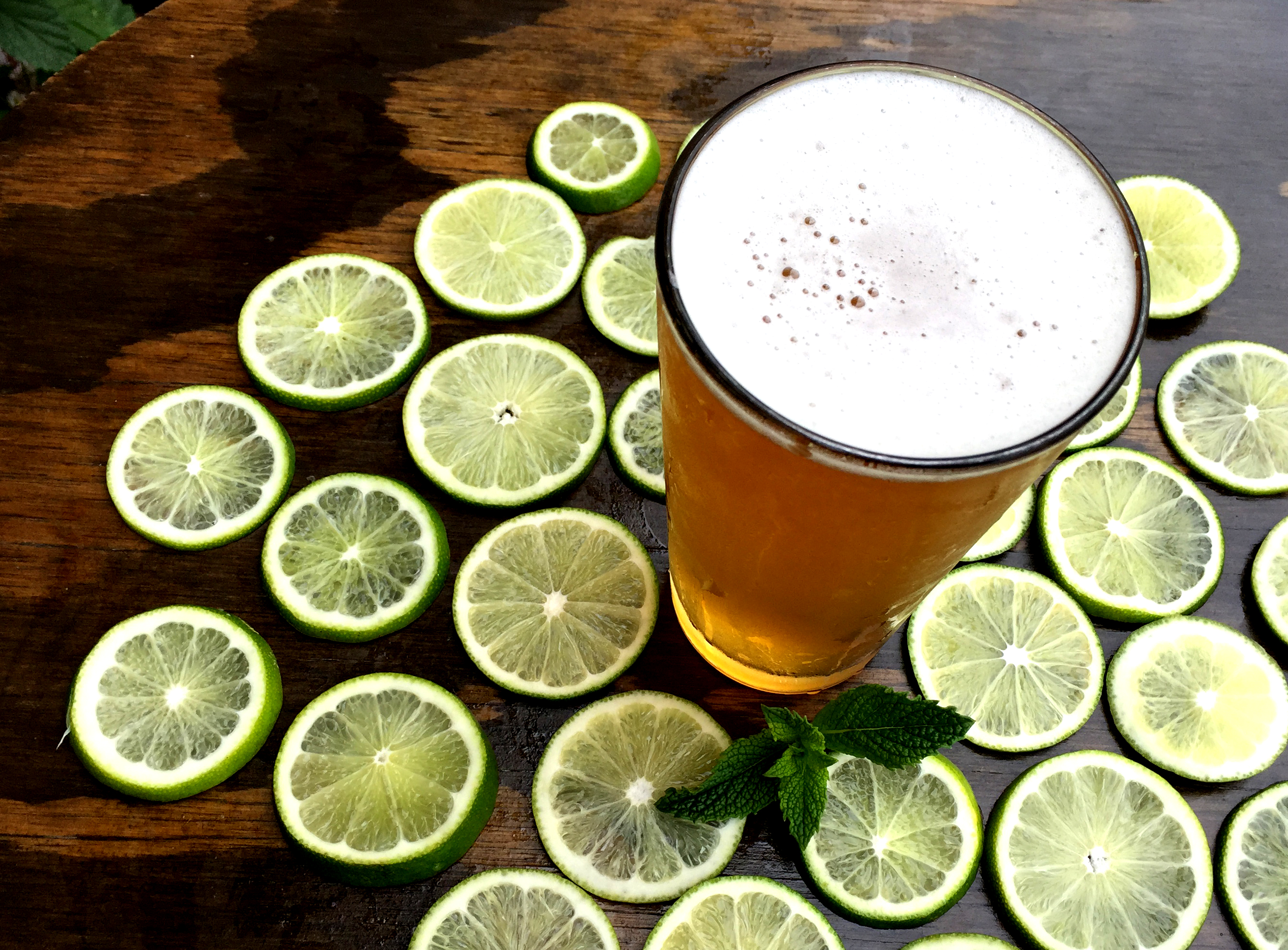
Mojito Shenanigans is back, with a twist
Mojito Shenanigans is back for more fun in the sun, now with an innovative twist.
Head Brewer Josh Bischoff explains, “Mojito Shenanigans has been a popular infusion in the taproom, and we’ve always wanted to do larger quantities of it. We weren’t convinced that we wanted to just dump a bunch of lime juice into our beer, so we were trying to come up with a cool way to do a large-scale version of it.
At the latest Craft Brewers Conference we attended a kettle souring seminar and we decided that might be a good way to go about it.” Using this process known as kettle souring, we dosed Shenanigans with lactobacillus bacteria in a 120-degree kettle for about 36 hours, which sours the wort and makes it tart. We then boil that wort as normal, add hops, and ferment with our house yeast before adding a generous amount of lime puree and mint. Kettle souring means we can ramp up production of this wildly popular summer beer.
Our Derailed Series Mojito Shenanigans is as light and refreshing as the Cuban cocktail itself, bursting with the flavors of fresh lime and mint. Salud!
